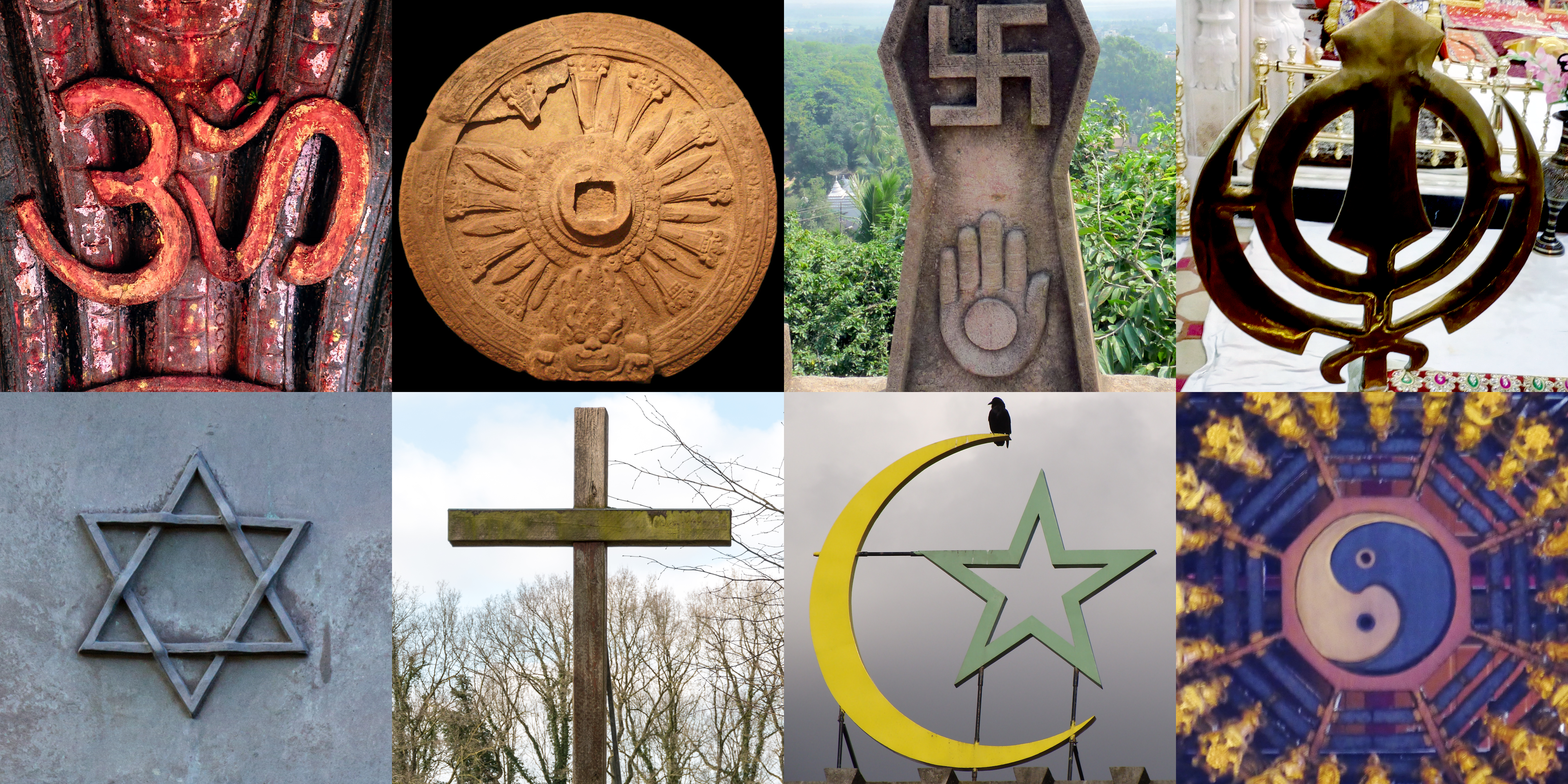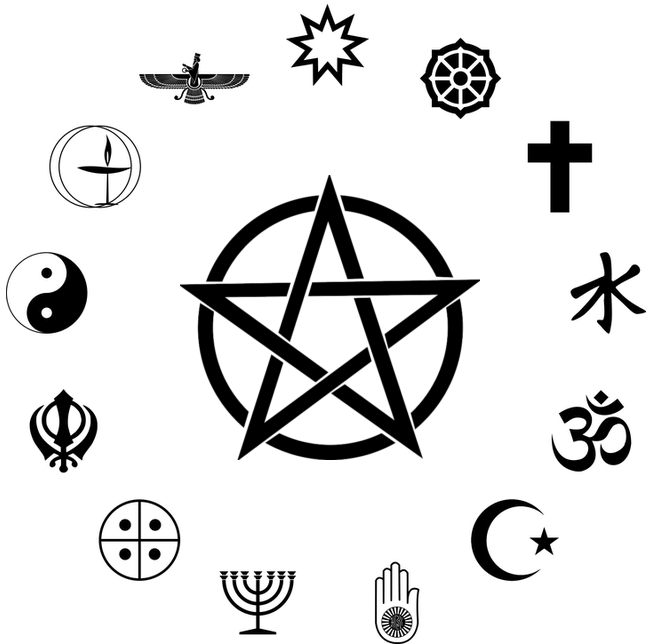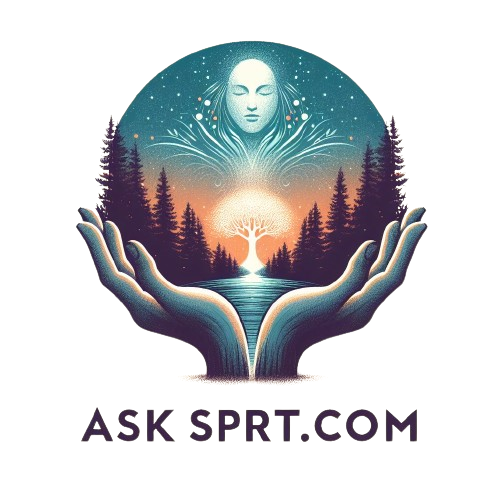Spiritual symbols hold deep meanings in various spiritual traditions and are used in personal practices to connect with higher realms. These symbols serve as powerful tools for meditation and mindfulness practices, helping individuals tap into their inner wisdom and spiritual essence.
They can represent universal truths, provide guidance, and foster a sense of peace and harmony within oneself. By incorporating symbols into their spiritual routines, practitioners can deepen their spiritual connection and cultivate a deeper understanding of the divine forces at play in the universe.
The Essence Of Spiritual Symbols
Explore the essence of spiritual symbols and their profound meanings in various spiritual traditions. Discover how symbols are utilized in personal spiritual practices, enriching the spiritual journey and fostering deeper connections with the divine.
Cultural Significance
Symbols have played a significant role in different cultures and religions across the world. They convey deeper meanings and connect people to their spiritual traditions and beliefs. For instance, the cross is a widely recognized symbol in Christianity, representing the sacrifice of Jesus Christ. Similarly, the Star of David is a symbol of Judaism, representing the shield of King David. In Hinduism, the lotus flower symbolizes purity, enlightenment, and rebirth. These symbols have cultural significance and are used as a means of expression and communication in various spiritual practices.Symbols As A Language Of The Soul
Spiritual symbols serve as a language of the soul, as they reflect the deepest aspects of human experience and consciousness. They help individuals to connect with their inner selves and the divine. The interpretation of symbols varies from person to person, depending on their spiritual beliefs, experiences, and cultural background. For example, the spiral symbolizes growth, evolution, and the journey of life in many spiritual traditions. It can also represent the cyclical nature of time and the universe. Symbols are a powerful tool for self-discovery, healing, and transformation, as they allow individuals to tap into their intuition and subconscious mind.How Symbols Are Used In Personal Spiritual Practices
In personal spiritual practices, symbols are used to deepen one’s connection to the divine and enhance spiritual awareness. They can be used in meditation, prayer, ritual, or visualization. For example, a person may use a mandala symbol to focus their mind during meditation or a crystal to enhance their energy and intention. Symbols can also be used as a form of divination, such as tarot cards or runes, to gain insight into one’s life path and spiritual journey. Whatever the purpose, symbols are a powerful tool for spiritual growth and transformation, as they help individuals to connect with their inner wisdom and the divine.Ancient Egyptian Hieroglyphs
Ancient Egyptian hieroglyphs were a complex system of symbols used by the ancient Egyptians to communicate and record their beliefs, history, and daily life. These hieroglyphs were a combination of pictorial representations and abstract symbols, forming a unique writing system that is still fascinating to scholars and enthusiasts today.
Ankh: Symbol Of Life
The Ankh symbol, also known as the key of life or the breath of life, is one of the most recognizable symbols from ancient Egypt. It resembles a cross with a loop at the top, representing eternal life and immortality. The loop of the Ankh symbolizes the sun rising above the horizon, while the vertical line represents the path of the sun across the sky.
The Ankh is often depicted in the hands of gods and goddesses, symbolizing their ability to grant and sustain life. It is also seen in tombs and funerary art, representing the hope for an afterlife and the continuation of the soul’s journey beyond death.
Eye Of Horus: Protection And Power
The Eye of Horus, also known as the Wedjat or the Eye of Ra, is a powerful symbol associated with protection and healing. It is believed to be the eye of the ancient Egyptian god Horus, representing his power and divine vision.
The Eye of Horus is depicted as a stylized human eye, often with markings resembling the plumage of a falcon. It is believed to have the ability to ward off evil and offer protection to those who wear or display it. The symbol is also associated with healing and restoration, as Horus was known as a god of healing and resurrection.
In addition to its protective qualities, the Eye of Horus is also associated with wisdom and insight. It is believed to provide clarity of vision and the ability to see beyond the physical world, offering a deeper understanding of the mysteries of life.
Ancient Egyptian hieroglyphs are a rich source of spiritual symbols and their meanings. The Ankh and the Eye of Horus are just two examples of the profound symbolism found within this ancient culture. Exploring these symbols can deepen our understanding of the spiritual traditions and practices of ancient Egypt, as well as inspire us to find our own personal connections to the divine.
Hinduism’s Sacred Imagery
Om: The Sound Of The Universe
Om, also spelled Aum, is a sacred sound and a spiritual icon in Hindu religion. It represents the essence of the ultimate reality, consciousness, and the universe. Chanting Om creates a vibration that resonates throughout the body, promoting a sense of peace and harmony.
Om is composed of three syllables: A, U, and M, which symbolize creation, preservation, and destruction. The sound also encompasses the waking, dreaming, and deep sleep states of consciousness. Om is often chanted at the beginning and end of Hindu prayers and meditation sessions.
Lotus: Purity And Enlightenment
The lotus flower holds great significance in Hinduism, symbolizing purity, enlightenment, and rebirth. It emerges from murky waters but remains untouched by impurities, representing spiritual awakening amidst worldly temptations. The unfolding petals of the lotus convey the expansion of the soul and spiritual growth.
In Hindu mythology, deities are often depicted sitting on or holding a lotus. This imagery signifies their transcendence beyond the material world. The lotus is also associated with the crown chakra, the energy center at the top of the head connected to higher consciousness and spiritual enlightenment.

Credit: www.hellomyyoga.com
Buddhist Symbols Of Enlightenment
Buddhist symbols of enlightenment hold deep meanings in spiritual practices, representing wisdom, compassion, and the path to awakening. These symbols, such as the lotus flower and the Dharma wheel, are revered for their ability to inspire and guide individuals on their spiritual journey.
Incorporating these symbols into personal practices can enhance mindfulness and foster a deeper connection to spiritual teachings.
Dharma Wheel: Path To Nirvana
The Dharma Wheel, also known as the Dharmachakra, is one of the most prominent symbols in Buddhism. It represents the teachings of the Buddha, known as the Dharma, and the path to enlightenment, known as Nirvana. The wheel itself is a circle with eight spokes, each representing one of the Noble Eightfold Path principles that lead to liberation from suffering. These principles include Right View, Right Intention, Right Speech, Right Action, Right Livelihood, Right Effort, Right Mindfulness, and Right Concentration.
The Dharma Wheel symbolizes the continuous cycle of birth, death, and rebirth, known as Samsara, and the possibility of breaking free from this cycle through the practice of the Noble Eightfold Path. It serves as a reminder to Buddhists to cultivate wisdom, ethical conduct, and mental discipline in order to attain liberation from suffering and reach a state of enlightenment.
Endless Knot: Interconnection Of All Things
The Endless Knot, also known as the Eternal Knot or the Knot of Eternity, is another important symbol in Buddhism. It symbolizes the interconnection of all things in the universe and the infinite nature of time and space. The knot is formed by a single line that intertwines and loops around itself endlessly, without a beginning or an end.
This symbol represents the Buddhist concept of dependent origination, which states that all phenomena arise from causes and conditions, and that everything is interconnected. It signifies the interdependence of all beings and the idea that our actions have consequences that affect ourselves and others. The Endless Knot serves as a reminder to Buddhists to cultivate compassion, kindness, and understanding towards all living beings.
Christianity’s Emblematic Icons
Cross: Sacrifice And Salvation
The cross is a powerful symbol in Christianity, representing the ultimate sacrifice and salvation through the crucifixion of Jesus Christ.
Ichthys: The Christian Fish
Ichthys, the Christian fish symbol, is an emblem of faith and a reminder of Jesus’ ministry as a “fisher of men.”

Credit: en.wikipedia.org
Indigenous Tribes And Nature Spirits
Indigenous tribes have deep connections to nature spirits, viewing them as guides and protectors.
Dreamcatcher: Protection In Native American Culture
The Dreamcatcher symbolizes protection in Native American culture.
Totem Animals: Guides And Guardians
Totem animals serve as guides and guardians in indigenous traditions.
Celtic Symbols Of Myth And Legend
Discover the rich symbolism of Celtic symbols in myth and legend, and explore their meanings in spiritual traditions. Uncover how these symbols are utilized in personal spiritual practices, adding depth and significance to one’s spiritual journey.
Triquetra: The Trinity Knot
Celtic symbols hold deep meanings in spiritual practices. The Triquetra, also known as the Trinity Knot, is a powerful symbol representing the eternal cycle of life. It symbolizes the interconnectedness of mind, body, and spirit.
Celtic Cross: Unity Of Earth And Heaven
The Celtic Cross embodies the unity of Earth and Heaven. This symbol signifies the connection between the physical world and the spiritual realm. It represents the eternal journey of the soul.
Mystic Symbols In Modern Spirituality
Symbols have played a vital role in spiritual traditions throughout history. In modern spirituality, symbols are still used to represent deeper meanings and connect with the divine. Personal spiritual practices often involve the use of these mystical symbols to enhance spiritual experiences and deepen one’s connection to the spiritual realm.
In today’s spiritual landscape, mystic symbols hold profound significance. They serve as gateways to deeper understanding and connection with the divine. The utilization of these symbols in modern spirituality enriches personal practices and promotes spiritual growth.Mandala: Cosmic And Psychic Order
Mandalas represent cosmic and psychic order in various spiritual traditions. They symbolize unity, harmony, and the interconnectedness of all life. Mandalas are used in meditation to achieve inner peace and spiritual transformation.Chakras: Energy Centers Of The Body
Chakras are energy centers located along the spine in the human body. Each chakra corresponds to specific physical, emotional, and spiritual aspects. Balancing and aligning the chakras through meditation and energy work promotes overall well-being and spiritual evolution.The Power Of Symbols In Personal Growth
Symbols hold deep meaning and significance in spiritual traditions and personal practices.
They serve as powerful tools for self-discovery and meditation.
Using Symbols For Meditation
- Focus on a symbol during meditation to deepen spiritual connection.
- Allow the symbol to guide your thoughts and bring inner peace.
Symbols As Tools For Self-discovery
- Reflect on symbols that resonate with your inner being.
- Explore the meanings behind these symbols for personal growth.

Credit: surflegacy.net
The Global Tapestry Of Symbols
Symbols have been a fundamental aspect of spiritual traditions across cultures, acting as visual representations of profound concepts and beliefs. They form a global tapestry that weaves together diverse cultural, religious, and philosophical perspectives. From the ancient Egyptian ankh to the sacred Om symbol in Hinduism, these symbols transcend geographical boundaries and connect humanity through shared spiritual imagery.
Syncretism: The Blending Of Beliefs
Syncretism, the amalgamation of different beliefs and practices, has led to the proliferation of spiritual symbols with layered meanings. This blending of diverse cultural and religious elements has given rise to new symbols that encapsulate the fusion of traditions. As a result, these symbols serve as bridges between different faiths, fostering a sense of unity and interconnectedness in the spiritual landscape.
The Future Of Spiritual Symbols
As spiritual practices continue to evolve, the significance of symbols remains paramount. In the digital age, symbols have transcended physical manifestations and are now disseminated through virtual platforms, reaching a global audience. The future of spiritual symbols lies in their ability to adapt to modern contexts while preserving their timeless meanings, serving as beacons of wisdom and guidance for individuals on their spiritual journeys.
Frequently Asked Questions
What Are Spiritual Symbols?
Spiritual symbols are visual representations of spiritual ideas and concepts. They are often used to convey deeper meanings and help individuals connect with their spirituality.
How Do Symbols Aid In Spiritual Practices?
Symbols can aid in spiritual practices by providing a focal point for meditation or prayer. They can also serve as reminders of spiritual beliefs and values.
What Are Some Common Spiritual Symbols And Their Meanings?
Common spiritual symbols include the lotus flower, which represents enlightenment and purity, and the tree of life, which represents growth and connection to the divine. Each symbol holds its own unique meaning and significance.
How Can Symbols Be Interpreted Differently Across Cultures?
Symbols can be interpreted differently across cultures based on their historical and cultural context. For example, the swastika symbol is viewed negatively in many Western cultures due to its association with Nazism, but it holds a positive and sacred meaning in Hinduism and Buddhism.
Conclusion
Symbols hold profound significance in spiritual practices, embodying universal truths and guiding personal journeys. Understanding their meanings allows for a deeper connection to the divine. By incorporating these symbols into daily rituals, individuals can cultivate a sense of inner peace and spiritual alignment.
Embracing these symbols enriches one’s spiritual experience and fosters a deeper connection to the sacred.



